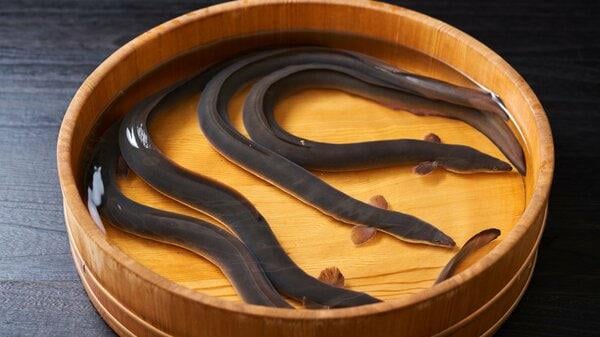
More than 10 years after Japanese eels were listed as endangered, there’s now a big development: On June 27, the European Union proposed that all eel species be added to an international trade regulation under the CITES (Washington Convention). If approved at the CITES meeting in November 2025, Japan’s eel market could take a serious hit.
At the same time, there’s growing hope for fully farmed Japanese eels, which were once considered difficult to commercialize. They may reach the market as early as late 2025.
What the new trade proposal means:
The EU proposal would place eels under Appendix II of the treaty. That doesn’t ban trade outright, but it requires proof that trade is legal and sustainable. However, experts say it could still reduce the eel supply in Japan, where 70–80% of eels come from abroad (either as farmed eels or baby eels called glass eels used for farming). If imports drop, prices will likely go up, possibly pushing eel out of reach for many consumers.
Will this help save the eel?
Reducing consumption might help, but it won’t automatically lead to more eels. That’s because many factors are causing eel populations to fall—like overfishing, pollution, habitat loss from dams, diseases, and climate change. It’s still unclear which factor is the most damaging.
There are also worries that strict regulations could backfire—causing illegal trading to rise or encouraging countries to focus more on using domestic eel resources, possibly harming wild populations further.
Can conservation efforts work?
Even conservation steps like releasing farmed eels into the wild or building fish ladders aren’t guaranteed to help. These actions can sometimes hurt wild eels or disrupt ecosystems. For example, fish ladders can make it easier for birds to prey on fish, and building them may give people a false sense that the problem is solved.
What really needs to happen, according to experts, is rethinking human impact—like removing unnecessary dams and restoring natural habitats, as Europe and the US have begun to do. Japan has only removed one major dam so far.
What about fully farmed or lab-grown eel?
Japan already has the technology to completely farm eels without using wild baby eels. These fully farmed eels might cost only a little more (maybe around $7–10 extra per eel), but they haven’t been widely sold yet due to unclear rules. That could change by the end of 2025.
Also, lab-grown eel meat developed in Israel might hit the market in 2026.
Still, even if fully farmed eels and lab-grown eels become available, not all fish farmers will switch. Just like with tuna, many producers will likely prefer wild baby eels if they’re cheaper and easier to get.
Bottom line:
Protecting eels is complex. Simply reducing how much we eat or farming them more isn’t enough. The real solution lies in reducing human impact on nature—not just replacing wild eels with alternatives, but restoring natural ecosystems and changing how we interact with them.
by MagazineKey4532
